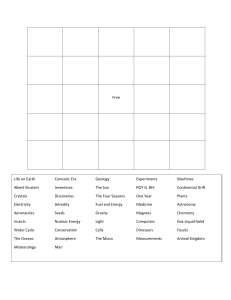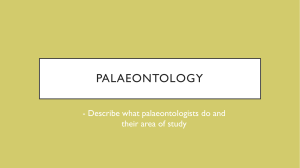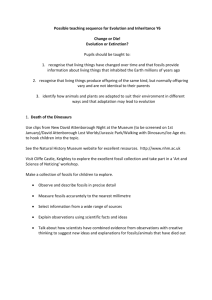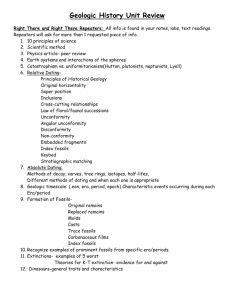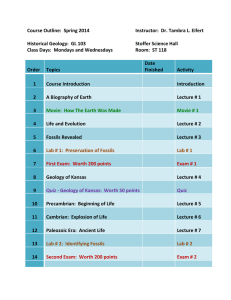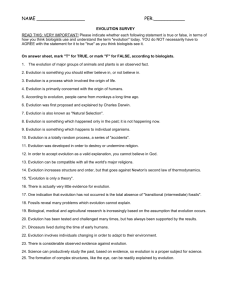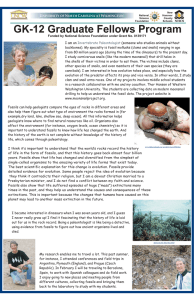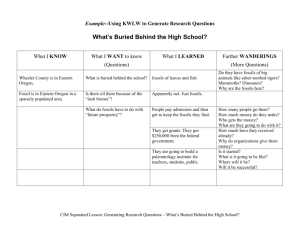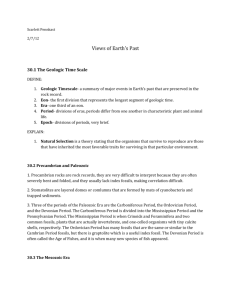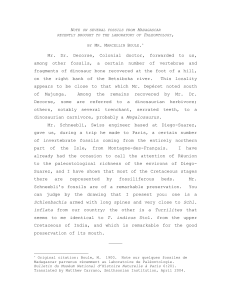11-29-11 st bio3 notes
advertisement
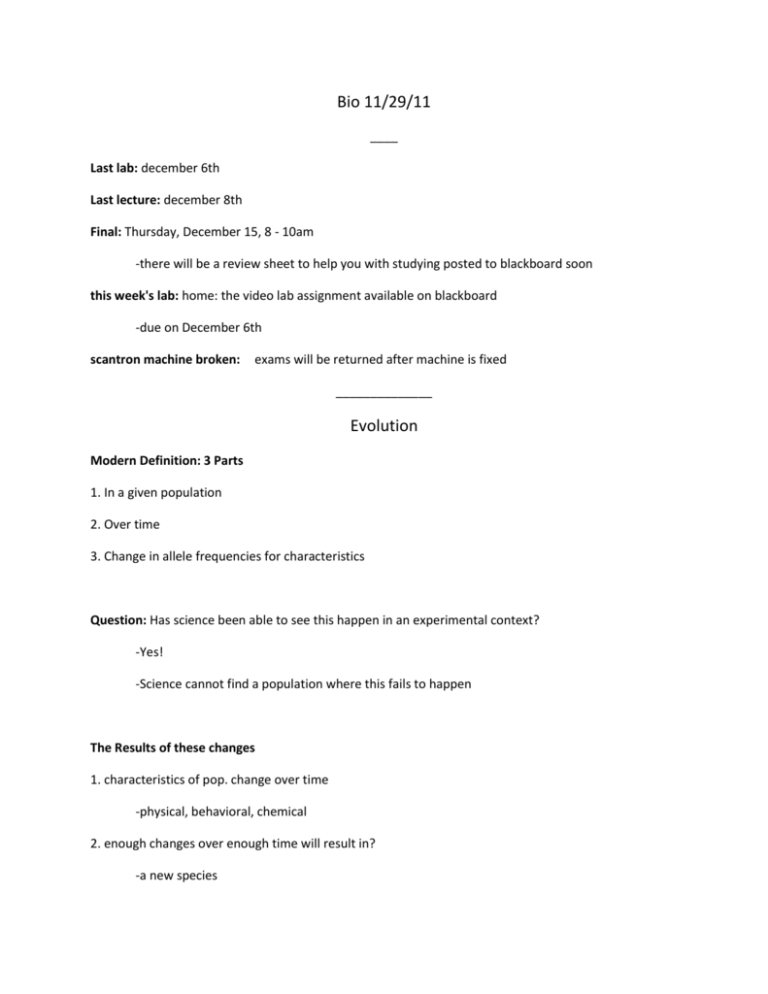
Bio 11/29/11 ____ Last lab: december 6th Last lecture: december 8th Final: Thursday, December 15, 8 - 10am -there will be a review sheet to help you with studying posted to blackboard soon this week's lab: home: the video lab assignment available on blackboard -due on December 6th scantron machine broken: exams will be returned after machine is fixed ______________ Evolution Modern Definition: 3 Parts 1. In a given population 2. Over time 3. Change in allele frequencies for characteristics Question: Has science been able to see this happen in an experimental context? -Yes! -Science cannot find a population where this fails to happen The Results of these changes 1. characteristics of pop. change over time -physical, behavioral, chemical 2. enough changes over enough time will result in? -a new species What is a species? -many diff. definitions -most recognized: biological species concept Biological species concept: a population/group of populations whose members have the potential to interbreed in nature and produce viable/fertile offspring, but do NOT produce viable/fertile offspring with members of other such pops. -problems with this definition? Example: what about dinosaurs which we can't see whether or not they can breed w/other dinosaurs? what about asexual creatures? For speciation to occur need: -Reproduction Isolation -can be time separation -can be physical separation Evolutionary Thought: -Pre-Darwin: -Early Greek philosophers: (like Anaximander, etc) simpler life forms preceded more complex ones -Aristotle: species are fixed/do not evolve -his theories had great influence on Western thinking -Archbishop James Usher: Earth is 6000 yrs old & Aristotle is correct -Judeo-Christian biblical view: all species = individually designed by God Advances Pre-Darwin: -in century before Darwin, science was advancing -Carolus Linnaeus: Binomial Nomenclature & classification hierarchy -had problems where every area/language had different names for the same thing -so set up a systematic way we name all things -a two-name naming system (Binomial nomenclature) -Genus and species -put genus first so that the animals that were similar were listed near each other (classification hierarchy) -Classification Hierarchy: K P C O F G C S -Kingdom: ex: animal kingdom vs plant kingdom -Phylum: ex: all animals w/backbone are in same phylum -Class: ex. all birds = one class, all mammals = another -what makes a mammal: have hair, 2 sets of teeth (baby vs. adult), mammary glands -Order: ex. all carnivores in one order -Family: ex. all dogs (from domestic to wolves) -Genus: ex. splitting dog species down -Species: ex. each specific species of the dog family (ex, domestic and wolf are separate) Saying to remember the system: Kings Play Chess On Fine-Grained Sand -Hutton: Geology -Gradualism: that all the features on earth (like mountains, lakes, canyons) are gradually created over the course of millions of years -Baron Cuvier: Catastrophism -according to his theory: -sets about to make the bible creation story fit with the known science -earth has been created and destroyed 5 times -that's where fossils came from -Count Buffon: the study of fossils suggests that Earth is older than 6,00 years, and fossil forms might be early versions of modern forms -Lamarck: Fossils are related to modern forms bc life evolves; acquired characteristics are inherited -Charles Lyell: "Principles of Geology", Uniformitarianism
